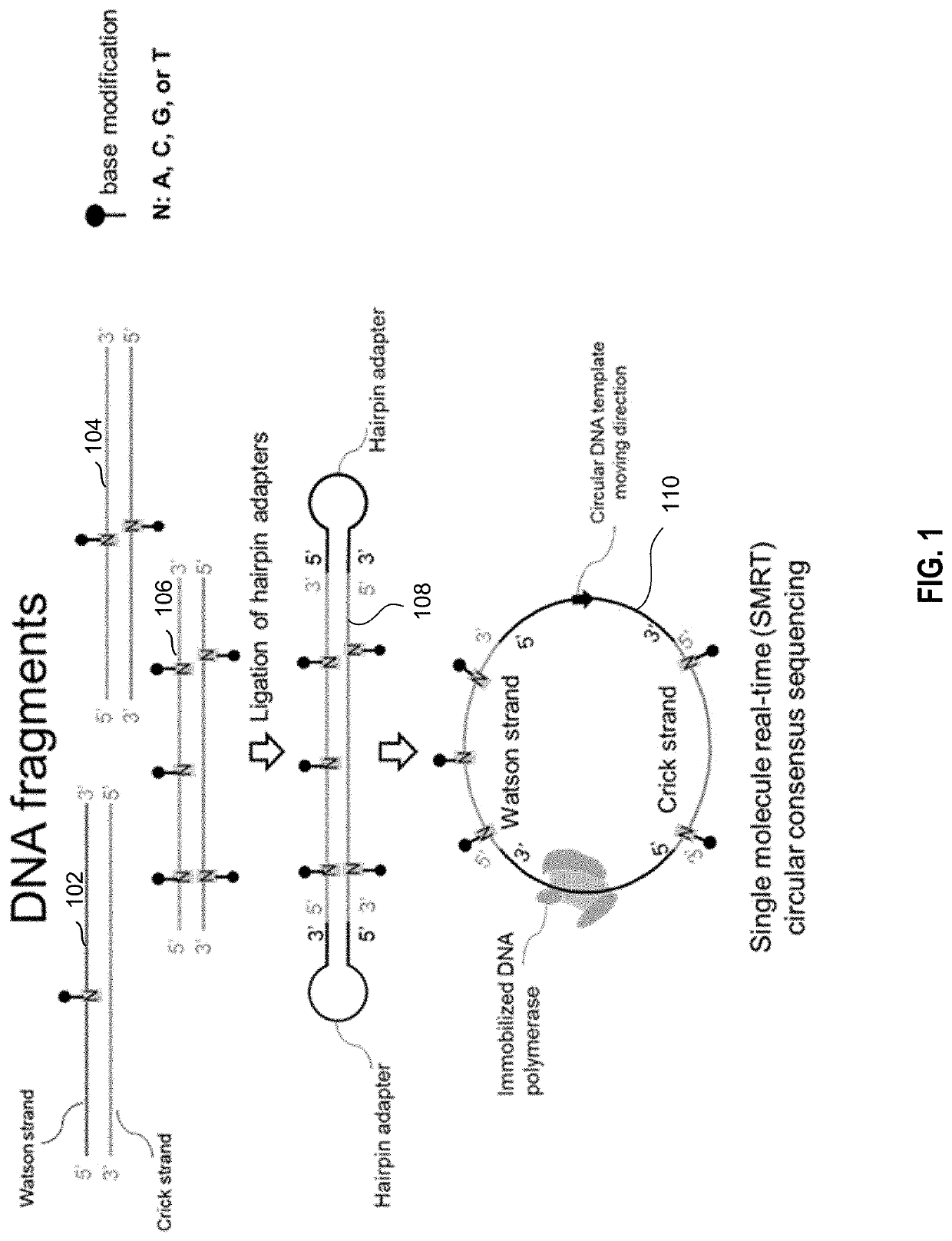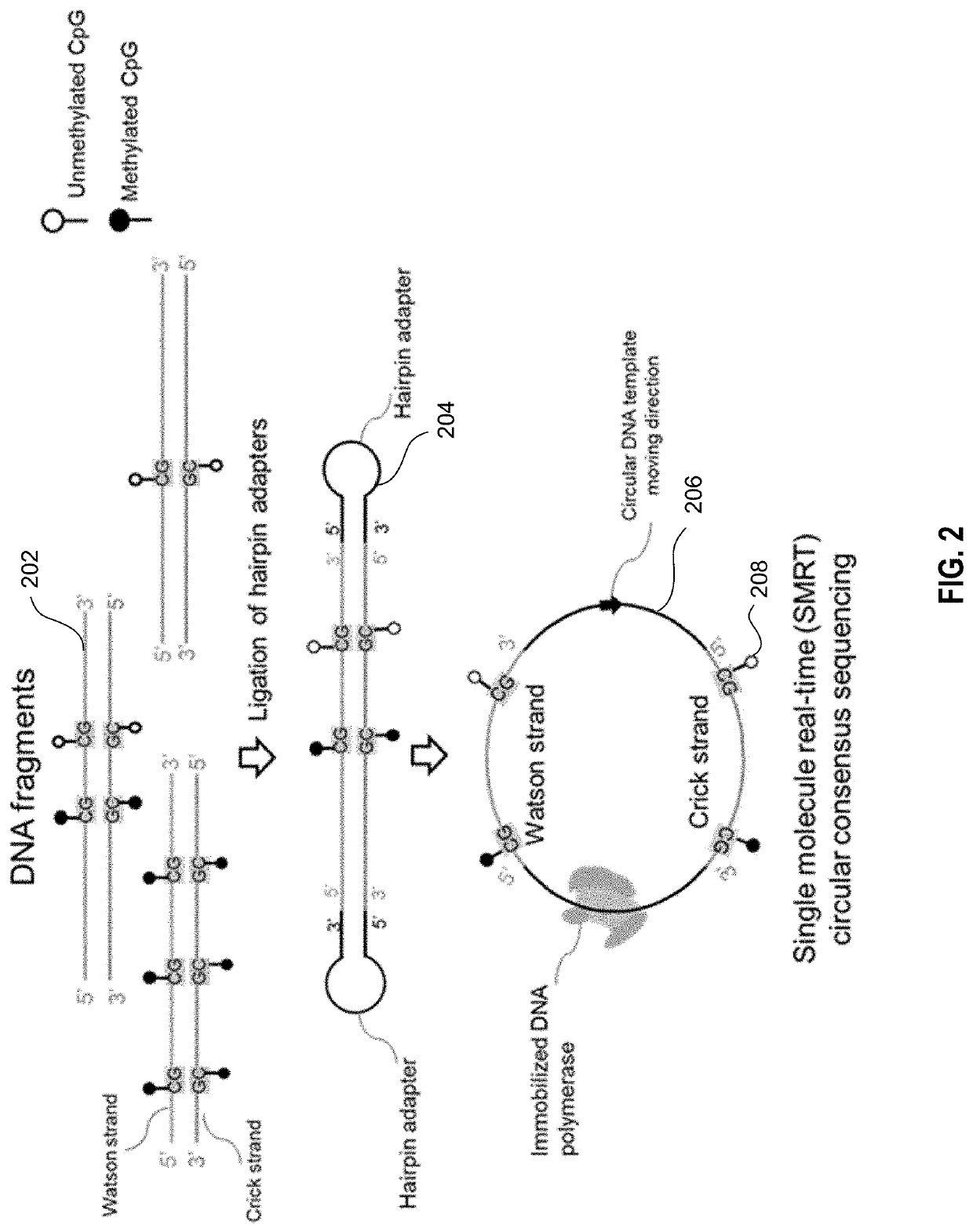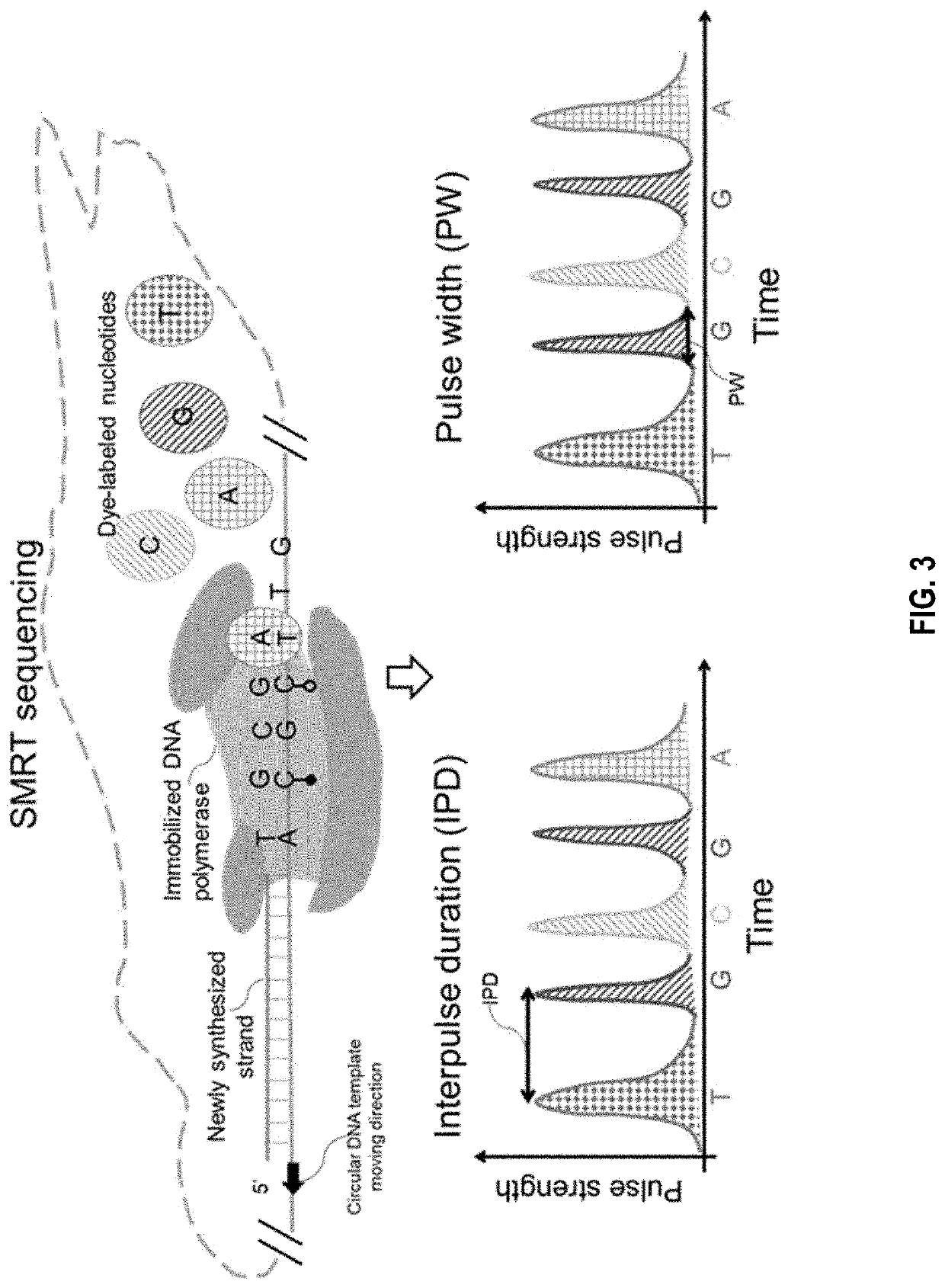Determination of base modifications of nucleic acids
a nucleic acid and base modification technology, applied in the direction of biochemistry apparatus and processes, instruments, molecular structures, etc., can solve the problems of reducing the signal-to-noise ratio typically, the majority of the dna treated by the bisulfite conversion step is significantly degraded, and the sequencing of long dna molecules is not easy
- Summary
- Abstract
- Description
- Claims
- Application Information
AI Technical Summary
Benefits of technology
Problems solved by technology
Method used
Image
Examples
Embodiment Construction
[0180]Achieving bisulfite-free determination of a base modification, include a methylated base, is the subject of different research efforts but none have been shown to be commercially viable. Recently, a bisulfite-free method for detecting 5mC and 5hmC has been published (Y. Liu et al., 2019) using a mild condition for 5mC and 5hmC base conversion. This method involves multiple steps of enzymatic and chemical reactions including ten-eleven translocation (TET) oxidation, pyridine borane reduction, and PCR. The efficiency for each step of conversion reaction as well as PCR bias would adversely affect the ultimate accuracy in 5mC analysis. For example, the 5mC conversion rate has been reported to be around 96%, with a false-negative rate of around 3%. Such performance would potentially limit one's ability to detect certain subtle changes of methylation in a genome. On the other hand, the enzymatic conversion would not be able to perform equally well across the genome. For example, the...
PUM
| Property | Measurement | Unit |
|---|---|---|
| pore size | aaaaa | aaaaa |
| width | aaaaa | aaaaa |
| time | aaaaa | aaaaa |
Abstract
Description
Claims
Application Information
 Login to View More
Login to View More - R&D
- Intellectual Property
- Life Sciences
- Materials
- Tech Scout
- Unparalleled Data Quality
- Higher Quality Content
- 60% Fewer Hallucinations
Browse by: Latest US Patents, China's latest patents, Technical Efficacy Thesaurus, Application Domain, Technology Topic, Popular Technical Reports.
© 2025 PatSnap. All rights reserved.Legal|Privacy policy|Modern Slavery Act Transparency Statement|Sitemap|About US| Contact US: help@patsnap.com



